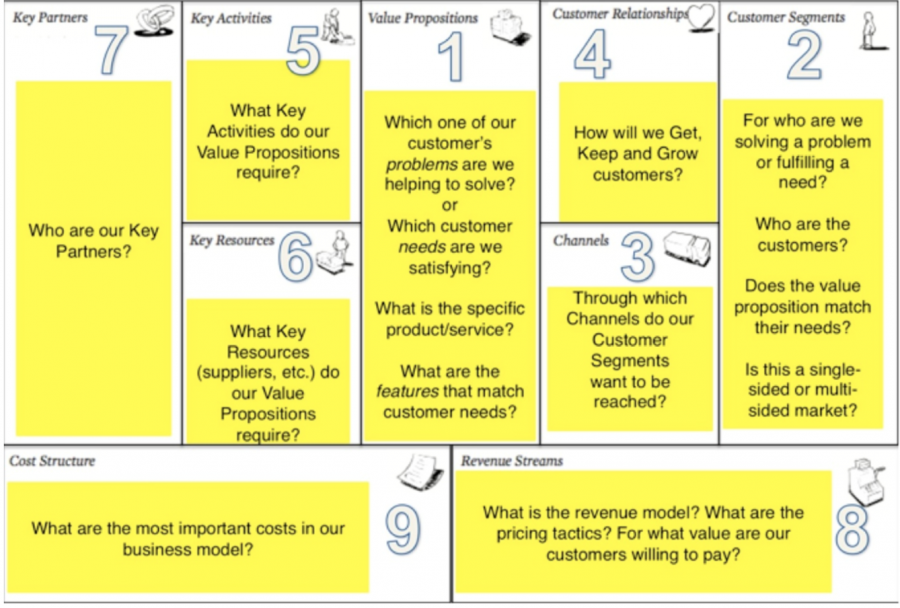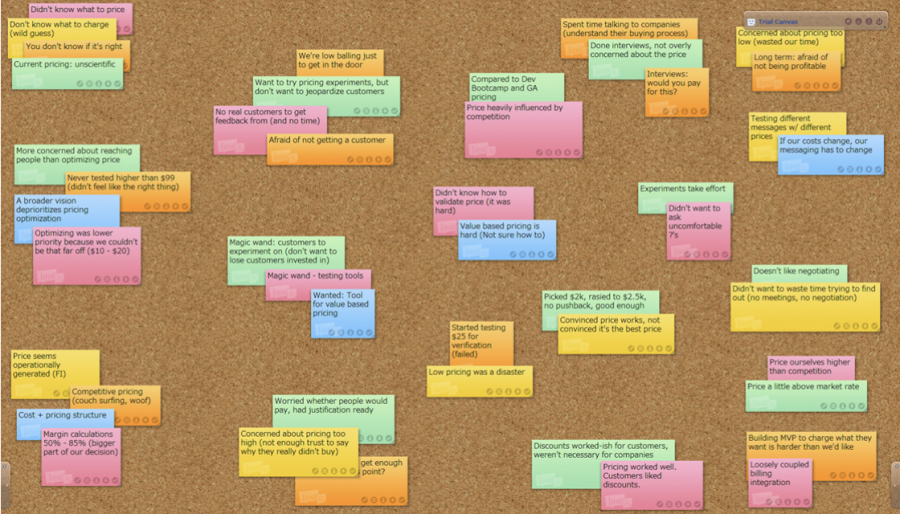On Wednesday, April 17, 2024, the Center for Career Education (CCE) hosted the Columbia University Small Business Development Center (SBDC) for a Design Your Next Steps workshop on Entrepreneurial Strategy. We explored resources and support that are available to you, factors to consider when starting a small business, and steps you can start taking now to prepare yourself for your business venture. CCE was joined by Kaaryn Nailor Simmons, Assistant Dean of Community Partnerships & Economic Impact at the Columbia-Harlem Small Business Development Center.
ICYMI, here are some key takeaways from the workshop:
In the past, people interested in starting a business were given the advice “write a business plan.” Now, the focus is on starting with customer discovery and creating a “lean startup.” SBDC would previously help students to create a pitch deck; now they recommend using AI-powered tools like Gozigzag to create a first draft of a business model canvas, before refining it and/or getting feedback from others. Remember that AI is still in its infancy and is no substitute for your critical thinking. It can, however, be a helpful tool to kickstart your thinking.
It’s important to consider both what value the company is creating for itself (i.e., profit, employee satisfaction, etc.) and what value the company is providing to the customers. This value goes beyond a single product or service, as these can change over time. Your mission or value statement makes it clear what you value as a company.
Make a Business Model
Kaaryn walked us through the Business Model Canvas and recommended looking up a quick YouTube video (like this example) to further deepen our understanding. The value proposition (box 1) is key: this is the problem or need you’re solving for, and it is critical to ensure that this value proposition is really clear. There are a number of needs you could be solving for, but make sure it’s clear which one you’re actually solving for. It’s helpful to start with figuring out what needs or problems are easy to solve. Once you build a process for creating or developing a solution, work on that process until it’s perfected; then you always expand from there.

Two key points to remember when using this business model:
It’s meant to be iterative, so it’s normal and expected that it will change over time, as you learn what works and what doesn’t work.
Your value proposition should be based on customer discovery.
Prioritize Customer Discovery
Customer discovery is the process of understanding the customers’ needs, pain points, and context; as Kaaryn put it: “Get out of the building!” Customer discovery can be hard for many people, but it’s something that is critical to your business and its success.
When doing customer discovery, talk to your customers to observe and learn everything you can. Is the “problem” you’ve identified a problem for them? How do they think about and interact with your solution? If you don’t have a solution yet, that’s ok. You can come up with a Minimum Viable Product (MVP)—the simplest version of a product that you can offer—so you have something they can observe and interact with.
When performing customer discovery, it’s best to actually talk to people (do an interview instead of a survey) and talk to a number of people (at least 20 in your target market). Try to elicit specific responses when collecting feedback by asking targeted questions; for example, if they like the project ask, “If you could change one thing, what would it be?” When doing the customer interviews, make sure to take notes. After you’ve finished the interview, you can group notes in order to identify patterns.

From your customer interviews it’s helpful to create a customer archetype as a way of making sense of the information you have. It’s key to learn and know who your customers are, so that you understand what kind of products they need or want. Once you have paying customers, treat them well! In other words, keep them happy—see if they can be repeat customers or advocates for the brand. It’s great to keep in touch over time, and today’s customers expect updates such as getting photos or stories about the process or product.
Advice for Students
Kaaryn emphasized that, because you’re at a university, “This is the best time to try things. Fail fast and learn. Try things while you have the time as a student.” She noted that we have a “robust ecosystem” of entrepreneurship-related programs (see Columbia Entrepreneurship for more information). Get connected and stay involved with the entrepreneurship community at Columbia.
There are many competitions across Columbia, with prize money and resources available, so take advantage of the resources available to you as students and alums. If you end up winning a competition, you can use that prize money to keep building and improving your product/service.
CCE Resources
Make an appointment with a career counselor for support with your job and internship search, or to discuss strategies for exploring your career path and evaluating organizations. You can also stop by our Quick Questions drop-in hours, in-person and virtually, Monday through Friday from 2:00 pm — 4:00 pm. No appointment is necessary. Quick Questions are open until April 29 and then close for the summer, but you can make career counseling appointments throughout the year.
Bookmark our events page to stay informed of the many events that will happen in the fall, such as workshops, career fairs, and industry showcases!
Be on the lookout for more Design Your Next Steps (DYNS) workshops, a series of events run by CCE and our partners (including employers) that will help you gain practical skills and guide you through your career journey.
Check out Columbia Entrepreneurship to access more resources and information. If you have specific questions, you can reach out to entrepreneurship@columbia.edu.


